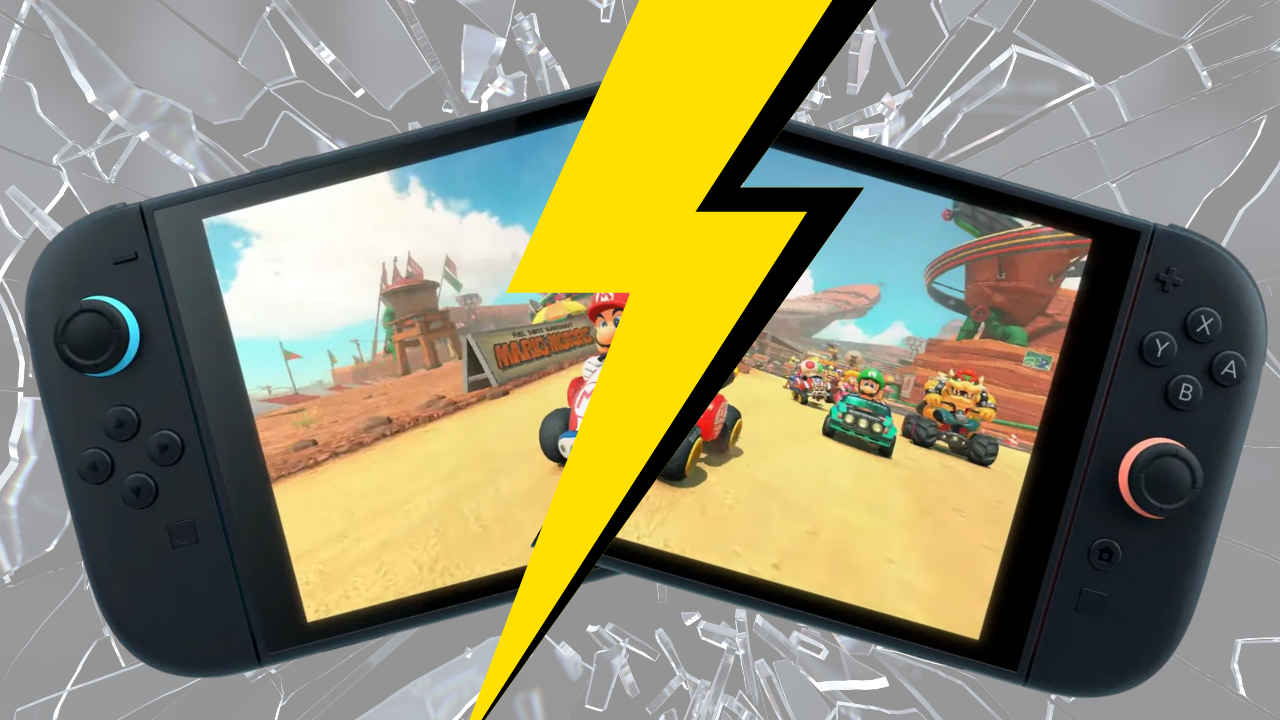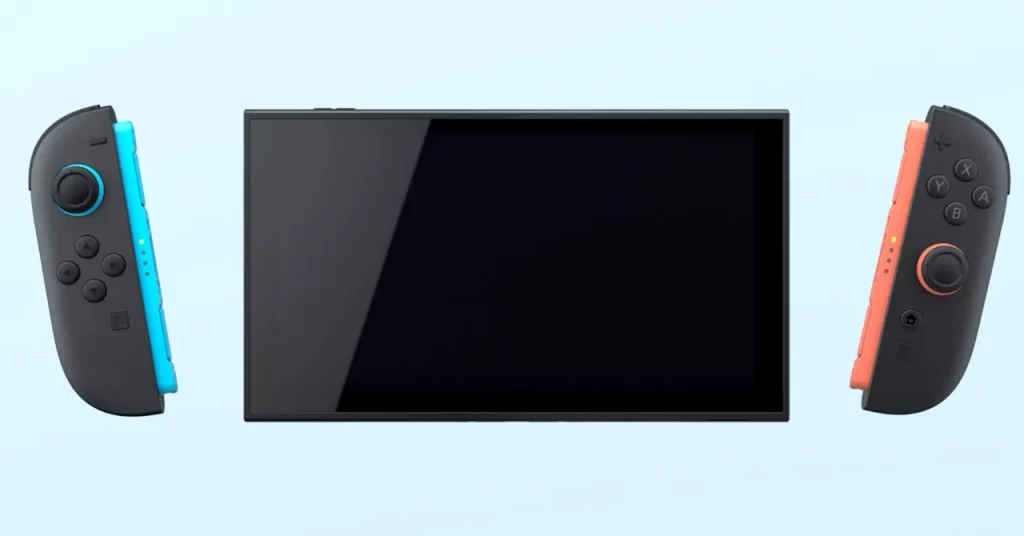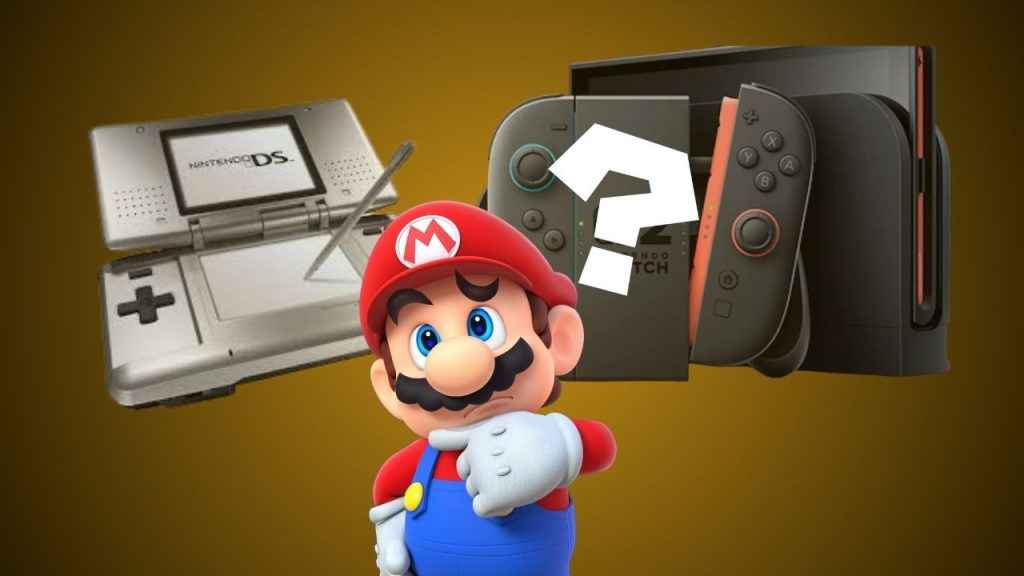Switch 2: Nintendo is growing up, but at what cost?
Nintendo Switch 2 debuts with 4K, HDR, video chat, and major hardware upgrades for 2025.
Game prices rise, simplicity fades as Switch 2 shifts toward subscriptions and digital sharing systems.
Switch 2 embraces modern gaming trends, risking the playful charm Nintendo fans grew up loving.

When I was 10, the Nintendo DS felt like a miracle. One screen to play, one to draw, whisper to my Infernape in Pokemon Platinum, and occasionally type out whatever nonsense I thought was clever back then. It didn’t have HD. It didn’t even have a decent battery. But it was intuitive, It was weird, and it was absolutely unforgettable.
 Survey
SurveyNow in 2025, Nintendo has pulled the curtain back on the Switch 2 – and this time, the miracle is in the spec sheet. We’re talking 4K output, DLSS hints, 120fps, HDR, VRR, magnetic JoyCons, faster storage, mouse support, game chat with video, mappable buttons, and a whole new family-sharing system built around virtual game cards.

Also read: Nintendo Switch 2 could soon be available in India, here’s how much it might cost you
Throw in GameCube support, a noise-canceling mic, improved Bluetooth/Wi-Fi, and a LAN port on every dock, and you’ve got something that sounds like Nintendo’s first true attempt at building a modern console. No longer the quirky cousin of PlayStation and Xbox, this thing wants to sit at the same table.
But here’s the part that’s hard to shake:
It’s trying to be everything, and in doing so, it risks being less Nintendo.
Nintendo’s losing Its simplicity
Nintendo’s genius has always been in subtraction. Remove friction, remove clutter, remove the sense that you’re setting something up just to have fun. From the DS to the original Switch, their best ideas were intuitive. You knew how to use them the moment you touched them.
The Switch 2 introduces complexity in layers. Some Switch 1 games get free updates. Others don’t. Some upgrades are free if you have the Expansion Pass. Some DLC is bundled, but some isn’t. There’s video chat but still no text chat. The GameCube pad exists, but only for invitees. The dock is available separately, but maybe not for everyone. It’s all more, but not necessarily better.

And then there’s the hardware itself. New JoyCons are magnetic and redesigned. Storage is faster and expandable, but with proprietary cards that might confuse many. The screen is sharper, but not OLED. Performance is drastically improved, but battery life has taken a hit. In trying to balance cutting-edge performance with legacy features and broad compatibility, the Switch 2 ends up feeling like a puzzle you have to solve before playing.
For a company that once let you boot into Mario Kart within seconds, the Switch 2 feels like a system that wants to be configured, subscribed to, and managed – not just played.
Nintendo thinks it’s competing with TikTok
The Switch 2 doesn’t just want to be a game console, it wants to be a platform. With its built-in mic, video chat support, virtual sharing, and always-on ecosystem feel, this is Nintendo aiming to slide into the modern attention economy. The console feels built for always-connected players, families sharing digital libraries, and a younger audience who treats every screen as a social layer.
But this is also a company with a notoriously rocky online history. Friend codes still exist. Its online store still feels like it’s running on a flip phone. Splatoon voice chat is still routed through a smartphone app. Even with new hardware, it’s unclear whether Nintendo has the infrastructure or the will to genuinely compete in a connected world without losing its charm.
And that charm is what made Nintendo so special in the first place. It was never about raw specs or leaderboards. It was about magical moments in Animal Crossing or sharing a JoyCon in the backseat of a car. With Switch 2’s new features, there’s a chance Nintendo is stepping into a world it doesn’t fully understand – where social features must work seamlessly and consistently across games, time zones, and bandwidths.
It’s also worth asking: does every game session need a mic and a chat window? Nintendo’s old design philosophy would’ve said no. But now, it seems to be trying to emulate systems it once avoided.
Also read: Camera to GameShare: Nintendo Switch 2 wants to redefine social gaming
Prices are going up, and Ownership Is getting murky
Games are getting more expensive. In the UK, there’s been a quiet 10–25% increase compared to Switch 1 titles, especially if you’re buying digital. Some titles like the Mario Kart bundle offer value, but others, especially with added DLC, seem priced to push subscriptions or digital upgrades.
Physical media is being quietly sidelined with more reliance on key cards and cloud licenses. More games will be delivered as digital codes inside physical boxes, blurring the line between owning a game and licensing it. Collectors lose out, and resale becomes trickier. In fact, the entire ownership model is being reshaped around subscription models and virtual access.
To be clear, features like family group sharing, free updates, and a cheaper digital tier sound generous. But this is Nintendo building a more gated, more monetized platform, one where you’ll pay more, own less, and probably subscribe to keep up. For older fans who grew up swapping cartridges and trading games, this isn’t a small shift. It’s a philosophical one.
You’ll still get your Mario, your Zelda, your Metroid. But now, the experience of getting them might come with a bit more decision fatigue; which version, which subscription, which storage format.
So where does that leave us?
The Switch 2 is easily the most ambitious console Nintendo has ever made. It’s powerful, modern, and for the first time, technically competitive with the rest of the industry. It looks like a serious platform, not just a fun toy.
But maybe that’s the point. For the first time in a long time, Nintendo looks like it’s trying to be taken seriously. And while there’s no harm in evolving, this new complexity, connectivity, and cost structure comes with baggage.
Nintendo’s best moments were often born from restraint. With the Switch 2, they’ve lifted the restraints, but in doing so, they’re also lifting the expectations. Players won’t just want Mario to be fun – they’ll expect 4K, flawless online, crossplay, smooth updates, full compatibility, and more. And if Nintendo can’t deliver on those fronts, the disappointment will feel sharper.
The Switch 2 isn’t a bad idea — it’s a bold one. It just feels like the kind of idea Nintendo used to laugh at… before it decided to grow up.
Let’s hope it doesn’t forget how to play.
Also read: Nintendo Switch 2: Will it redefine hybrid gaming in 2025?
Vyom Ramani
A journalist with a soft spot for tech, games, and things that go beep. While waiting for a delayed metro or rebooting his brain, you’ll find him solving Rubik’s Cubes, bingeing F1, or hunting for the next great snack. View Full Profile